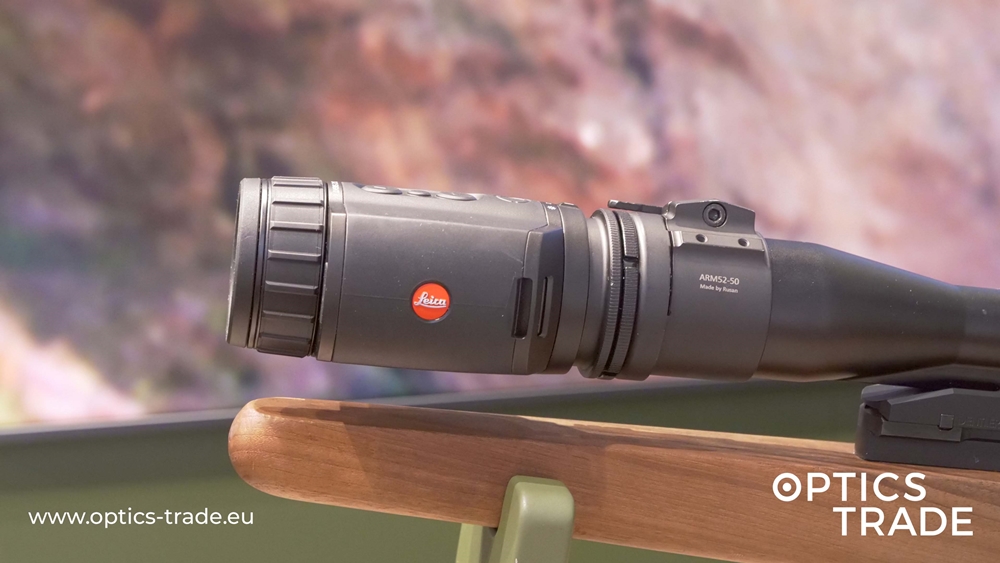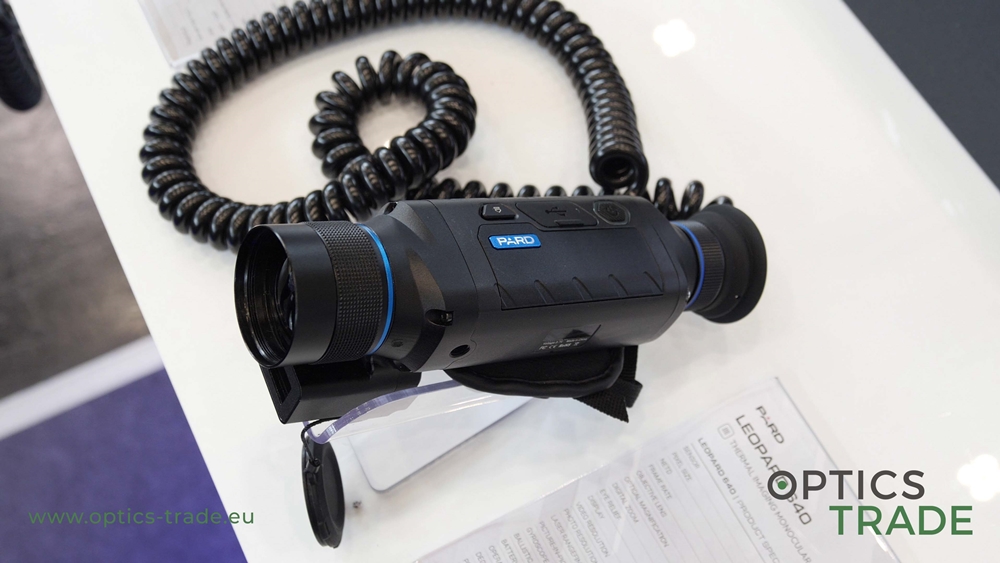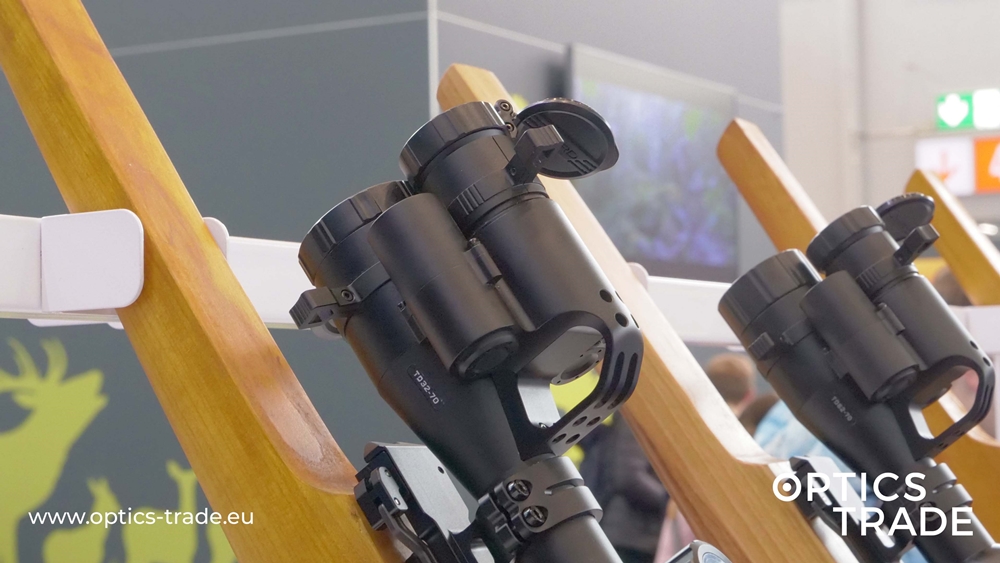Introduction
Pulsar is one of the most popular manufacturers of night vision and thermal imaging devices in the world thanks to the excellent price-quality ratio of their devices. Their headquarters are in Lithuania where they manufacture most of their products. One of them is Pulsar Accolade, thermal imaging binoculars.

Accolade 2 – NETD reduced from 60 to 40 millikelvins
The series was first introduced in 2018, and since then Pulsar has greatly upgraded the devices. First, they expanded the offer with models with a built-in laser rangefinder, and later they improved them with various updates. This year, Pulsar decided to take it a step further – the popular Accolade series was succeeded by the Accolade 2 series. The difference between the first one and the second one is in the thermal imaging contrast NETD (Noise Equivalent Temperature Difference). This feature tells you how well the sensor on the device can distinguish between extremely small temperature differences. The lower the value, the better the perception of detail in the image. In the first series, the value was 60 millikelvins; series two boasts an incredible 40 millikelvins, which is especially visible in the cold, during rain and in the fog – great progress is also seen in the detection and evaluation of antlers. The first model they introduced is the Accolade 2 XP 50, and over time they will update the rest.

What remains the same?
All other properties remain the same. In the continuation of the article, we will describe the properties of the first and second generation. First of all, it is worth mentioning that Accolade devices are identical in performance to Helion devices, differing only in the housing. For Accolade devices, we distinguish between XQ and XP versions. As with Helion devices, there is no difference in appearance between Accolade devices marked XQ and XP – they differ in the built-in thermal imaging sensor.
In both groups (XQ and XP) there are two devices that do not differ in properties; there is only one difference – one of the models has a built-in rangefinder and the other does not. The XQ devices are equipped with a sensor with a resolution of 384 x 288 pixels. The pixel pitch is 17 µm, and the diameter of the lens is 38 millimeters. Therefore, the minimum magnification is 3.1 x and the maximum is 12.4 x. At the lowest magnification, the field of view is 17.2 meters per 100 meters, and the screen resolution is 640 x 480 pixels. The maximum distance at which heat can still be detected is 1350 m.

The XP devices have a 640 x 480 pixel sensor with a pixel pitch of 17 µm and a lens diameter of 50 mm, which provides a sharper image and lower minimum magnification with a larger field of view. At a minimum magnification of 2.5 x, the field of view is 21.8 meters by 100 meters. Unlike the XQ series, the magnification range in XP is larger, as the image can be zoomed in with 8x digital zoom. With a screen resolution of 640 x 480 pixels, the screen resolution is the same as with the XQ series, but heat can be detected up to 1800 m.

With Accolade thermal imaging binoculars, game can be identified up to a distance of 500 m, depending on the model of the device and the size of the animal. The advantage of thermal imaging devices is that – unlike analog and digital night vision devices – they can be used in all weather conditions, including fog and rain. If it is cold outside, it is even better for the observer, as the color contrasts on the screen will be even more pronounced due to temperature differences. Their advantage is also that they can be used in daytime and nighttime.
We dedicate a few words to the unique form of thermal imaging binoculars. Because you can see through this device with both eyes, viewing is much more comfortable than with a monocular. The most important feature for comfortable viewing is the adjustable interpupillary distance, which means that the distance between the eyepieces can be adjusted, thus ensuring an optimal optical experience.

A beautiful and fluid image requires a high refresh rate, which means that the image changes without visible stops. Pulsar Accolade devices have a refresh rate of 50 Hz – the image is refreshed 50 times per second. Due to the fast refresh, the device provides a smooth view in real time. Accolade devices also boast the ability to take photos and record videos. With the function Display off, we can quickly dim the screen, which is especially useful if the game is approaching and we want to hide.
All Pulsar Accolade devices have a certified level of waterproof protection IPX7, which means that they are resistant to rain. One can even submerge them to a depth of one meter for 30 minutes. They can withstand very low temperatures, down to -25 ° C. They work with Pulsar’s lithium-ion battery IPS7, which ensures the operation of the device for up to seven hours. The battery can be replaced quickly, which is one of the main advantages of Accolade devices over competing devices which mostly have built-in, non-removable batteries that start to run out after a few years of use – because the battery cannot be replaced, such devices can only be discarded. The devices have a built-in Wi-Fi transmitter that enables you to connect them to a smartphone. The app on your smartphone (Stream Vision) allows, among other things, to transfer an image from the device to the phone in real time, transfer photos and videos, and update the device. Pulsar is constantly updating its devices to ensure their long-term competitiveness.
Two devices, which have the LRF mark next to their name, boast a built-in laser rangefinder, which is a real specialty in the civilian market. So far, these are the only binoculars with a built-in laser rangefinder in the civilian market, all others are equipped only with the ‘stadiametric rangefinder’. Unlike accurate distance measurement, it works on the basis of estimating the distance to the game of known size. With the Accolade LRF, the user can measure distances to objects up to 1000 meters away with extreme accuracy. As a result, long-range shooting is easier and more accurate.

The price of the devices ranges from 2700 to 5000 Euros, depending on the chosen model. You receive a three-year warranty at the time of purchase, and repairs are still possible after this period.
Conclusion
The described thermal imaging binoculars are an excellent choice for all hunters who are looking for a state-of-the-art thermal imaging observation device suitable for use in all weather conditions. Observing with both eyes is more comfortable than observing with one, and at the same time we can use the device for a longer time without making our eyes tired.






